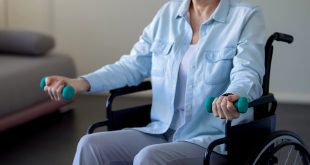I want to thank Nancy for raising an important question about the frequency of walking.
She wrote:
“I walk about 40 mins a day stretched to two episodes of about 20 mins 5 days a week. The weekends I don't have anything regular but I am a lot more active whether it be housework or yard work and the occasional bike ride. Aerobic exercise usually ends up giving me a headache and feeling of extreme fatigue. I tend to stick to the lighter exercise. So how much walking is considered enough?”
Frequency is the first principle of any exercise routine, others being Intensity, Type and Time, so called the 'FITT rule'.
Frequency:
Following any form of exercise, the body goes through a process of rebuild and repair to replenish its energy reserves consumed by the exercise. The frequency of exercise is a fine balance between providing just enough stress for the body to adapt to and allowing enough time for healing and adaptation to occur. Hence most diabetes associations recommend the following frequency:
- At least 30 minutes of moderate-intensity aerobic activity at least 5 days per week for a total of 150 minutes per week
OR
- At least 25 minutes of vigorous aerobic activity at least 3 days per week for a total of 75 minutes per week; or a combination of the two
AND
- Moderate to high intensity Resistance Training activity at least 2 or more days per week for additional health benefits.
Regardless of what the ideal frequency is, there are such competing demands as work responsibilities, family commitments, and housework that impact stress levels and the ability to fully recover from an exercise session. For this reason, the ideal training frequencies previously discussed may not be ideal in the real world. It is ultimately one’s own responsibility to set aside a dedicated time.
Muscles retain a metabolic memory and even three ten-minute sessions are a great start. You’ll also find your fitness level improves and you’re able to have a structure in the routine without undue stress. Thereafter, look at increasing the frequency to a minimum of 30 minutes five days a week. The other 2 days you can just be physically active, as Nancy suggests.
Stretching walking to 40 minutes in two twenty-minute episodes is a great strategy to increase your fitness level. An analysis of large cohort studies undertaken by Canadian Diabetes Association Guidelines authors have demonstrated that, in people with type 2 diabetes, regular physical activity of frequency described above and/or moderate to high cardiorespiratory fitness are associated with reductions in cardiovascular and overall mortality of 39% to 70% over 15 to 20 years of follow-up.
Nancy describes an additional symptom of headache and feelings of extreme fatigue following aerobic exercise. Fatigue of this degree requires clinical examination and some laboratory tests for excluding many possible causes. Of course one thing that always has to be excluded is hypoglycemia following exercise. This is likely to occur in people taking insulin or the sulfonylureas class of drugs such as glyburide.
Headache following exercise is another entity which is sometimes a sign of dehydration on hot, humid days. In some people prone to migraines, aerobic exercise-induced migraines may last much longer and be worsened by dehydration, heat, fatigue and high intensity of exercise.
Problem-solving is a core concept of effective diabetes self-management.
 Diabetes Care Community Learn, connect and care
Diabetes Care Community Learn, connect and care




